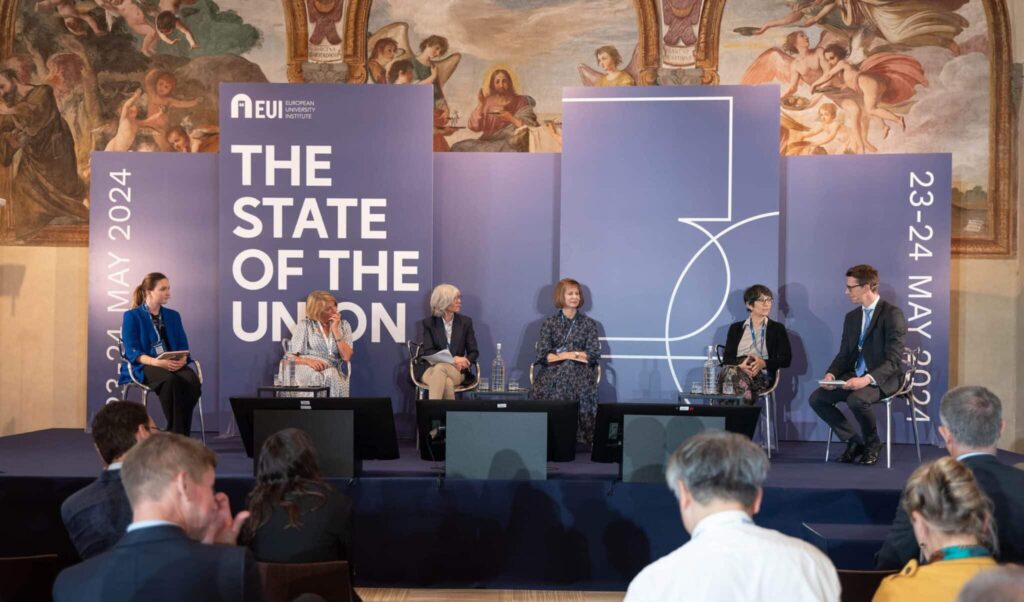How to make capacity mechanisms compatible with the single EU electricity market
This is the second installment of the Topic of Month: Research for policy impact - stories from the FSR
Research for policy impact – stories from the FSR
Following the energy crisis, security of supply, and in particular of energy supply, is high on the policy agenda. In the electricity sector, capacity mechanisms are one of the main tools we can use to ensure security of supply. They are today used by more and more Member States across the EU. Consequently, capacity mechanisms’ current and future role was recognized in the Electricity Market Design Reform adopted in June. The Commission was moreover tasked to work on facilitating (or streamlining) their introduction1.
Following the Draghi report, market integration is also high on the policy agenda. As stated in the report: “A genuine Energy Union should ensure that central market functions of relevance for an integrated market are performed centrally and subject to proper regulatory oversight”. In electricity markets, some elements are well-integrated, while some others remain national and fragmented. Such fragmentation can bring market complexity and costly market distortions. Capacity mechanisms are an example of market fragmentation, as they are currently designed and operated at national level.
Considering their reinforced role, and their current fragmentation, we therefore chose to work on capacity mechanisms from an EU-level perspective. More precisely, we first realized that most of the existing literature had focused on the need and technical design of capacity mechanisms, with a national perspective.
Fewer had looked capacity mechanisms’ cross-border interactions. Our research question therefore became: how to make capacity mechanisms compatible with the single EU electricity market?
First, we looked at the problem. Using a simple model, we observed the negative cross-border effects that national capacity mechanisms (in particular, capacity markets) can have on their neighbours. Second, we looked at potential solutions. Using that same model, we showed that it might be complex to resolve the problem in a highly interconnected system. In particular, we show2 that the regulatory remedy currently mandated for capacity markets might not deliver the expected outcome. As this requirement is one of the most complex to implement for Member States applying for a capacity market, we recommended being less strict about it. This contribution ended up being timely, considering the ongoing streamlining procedure.
If we have no available remedy, can we treat the problem at its root? We showed that if capacity mechanisms are heterogeneous, there is (at least for now) no regulatory remedy to properly mitigate their cross-border effects. These effects might moreover increase with interconnectivity. The alternative solution, would be to coordinate, harmonize and integrate capacity mechanisms, i.e. treating the problem at its root. As capacity mechanisms have historically been tailor-made to Member States needs, such a discussion raises many political, legal and technical questions. To come back to the Draghi’s report conclusions: we are halfway in our electricity markets integration, but remaining halfway comes with too many inefficiencies.
What comes next? We will investigate the many challenges raised by such a “Europeanisation” of capacity mechanisms. “Europeanising” should also come with “modernizing”, so that capacity mechanisms work for, and not against, the energy transition. Future-proofing capacity mechanisms imply, inter alia, integrating flexibility needs, ensuring decarbonization objectives, and better including consumers and decentralized resources.
Over this PhD journey, we will continue to engage with key stakeholders, including the European Commission, ACER, national regulators, market parties, and TSOs. From the very beginning of the PhD, we took the opportunity to discuss with policy makers and adequacy experts. These interactions have been, and continue to be, immensely valuable in shaping our research. By thinking fundamentally about the future of capacity markets, we also managed to make a contribution to the shorter term objective to streamline these markets.
1: Member States that want to introduce a capacity mechanism must have it approved under State Aid. This approval process can be quite complex and lengthy.
2: In an upcoming Policy Brief (“An easy fix to streamline capacity mechanisms”) and its accompanying working paper (“Cross-border participation: a false hope for fixing capacity market externalities”)
Emma Menegatti is part of the FSR research team in electricity regulation and policy and she is currently a PhD candidate of the FSR-Loyola de Palacio Chair, investigating the future of capacity mechanisms in Europe.






